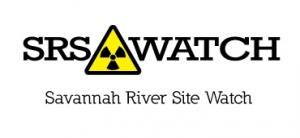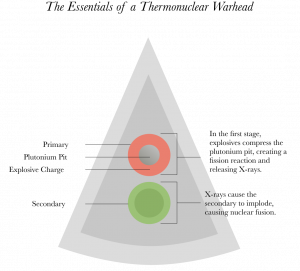Department of Energy Official Reveals More Delays in Plans for New Plutonium Pit Facility at DOE's Savannah River Site

Savannah River Site is a non-profit public-interest organization that monitors policies and programs of the US Department of Energy, with a focus on the Savannah River Site in South Carolina.
SRS Pit Plant would Fabricate Plutonium Pits (Cores) for New and Old Nuclear Weapons; Schedule Delays, Cost Increases Mounting, with Cost Nearing $12 Billion
COLUMBIA, SOUTH CAROLINA, US, October 27, 2022 /EINPresswire.com/ -- A facility proposed to make the key plutonium component for new U.S. nuclear warheads faces another substantial delay, according a U.S. Department of Energy official at a nuclear meeting this week in South Carolina. The delay of construction of the Plutonium Bomb Plant, proposed to make plutonium “pits” at the U.S. Department of Energy’s sprawling 310-square-mile Savannah River Site (SRS) near Aiken, SC, could push the price tag to $11.5 billion or higher.
The official in charge of DOE’s nuclear weapons work at SRS publicly revealed that construction of the facility to make plutonium pits, or cores, for new nuclear weapons, is another 6 months or more behind schedule. The weapons facility had initially been proposed to be operational in 2030, then in 2021 the date slipped to between 2032 and 2035. Now, there is yet more schedule slippage.
DOE is pursuing dual pit plants at SRS and the Los Alamos National Lab (LANL) in New Mexico, to initially make 80 or more pits per year for at least two new nuclear warheads planned by the Department of Defense (DOD) - the W87-1 for a new ICBM and the W-93 for a submarine-launched ballistic missile. Then, DOE, which assembles and maintains nuclear weapons for DOD, would replace pits in all 4000 active and reserve warheads.
The pit plants would make the ~3kg plutonium spheres used in all U.S. nuclear weapons. A declassified version of President Biden’s Nuclear Posture Review (NPR), containing policies concerning nuclear weapons, is anticipated to soon be released. The NPR will likely endorse the dual-track plutonium pit-plant approach but should have focused more on arms control and disarmament and not new nuclear weapons and the production facilities for them.
“Our prediction that the unneeded SRS plutonium pit plant would continue to face significant delays and substantial cost increases is sadly being proven true,” said Tom Clements, director of the public interest group Savannah River Site Watch. “In the name of global peace and security, all parties must halt talk of nuclear war, stop actions stimulating a new nuclear arms race - including a freeze on plans for new pit plants - and sit down to negotiate the next steps toward disarmament, as required by the Nuclear Nonproliferation Treaty,” added Clements.
At the South Carolina Nuclear Advisory Council meeting in Columbia, SC on October 24, 2022, Mr. Jason Armstrong, manager of DOE’s National Nuclear Security Administration (NNSA) activities at SRS, stated that the next key decision point for the facility, Critical Decision-2, would likely be the middle of Fiscal Year 2025 (or around April 1, 2025). On June 28, 2021, in Critical Desion-1, which gave the go-ahead for planning and revealed a preliminary cost estimate of up to $11.1 billion, DOE said that CD-2 would be in Fiscal Year 2024, which ends on September 30, 2024. Thus, Armstrong revealed at least a 6-month delay in the SRS pit project. At CD-2, a preliminary design is approved, along with a definitive cost and schedule. At CD-3, construction can begin.
In response to question from Nuclear Advisory Council chairman Rick Lee about the status of CD-2, Mr. Armstrong said “Oh, that’s a good question. That’s a good question.” He then turned to Mr. Stuart McVean, CEO of Savannah River Nuclear Solutions, the company leading the design, and asked “What’s the best date you’re hearing so far, Stewart?” McVean responded “Middle of 25.” Armstrong then said “I’m hearing middle of Fiscal Year 25 also.” He added “We’re just been working with SRNS to identify a construction contractor that SRNS will manage to increase the efficiency of construction activities.”
Armstrong also said that the design of the SRS Plutonium Bomb Plant was 40% complete.
The minimum amount that Congress is likely to appropriate for Fiscal Year 2024 spending on the SRS pit plant is around $750 million and will likely be well over $1 billion. A six-month delay would thus cost a minimum of approximately $375 million. “The annual pit plant costs will go up in the coming years and, according to the way DOE works, the cost increase due to the just-announced schedule delay will never be recovered,” said Clements. DOE’s target for annual spending on the SRS pit project, based on figures presented in the FY24 budget, appears to be about $1 billion per year.
A lawsuit remains before a federal judge in South Carolina in which the plaintiffs - SRS Watch, Nuclear Watch New Mexico (Santa Fe, NM) and Tri-Valley CAREs (Livermore, CA) - have demanded that a programmatic environmental impact statement (PEIS) on pit production be prepared. The PEIS would analyze impacts of pit production at all DOE sites, including heretofore unanalyzed disposal of plutonium by-product waste (transuranic waste) from pit production in the Waste Isolation Pilot Plant (WIPP) in New Mexico. The South Carolina Environmental Law Project (SCELP) represents the groups. A ruling by the judge could come at any time.
###
Notes:
Link to archived video of “Governor’s Nuclear Advisory Council” meeting October 24, 2022, go to 26 minutes, 10 seconds for comment on SRS Plutonium Bomb Plant delay; public comment on the pit-plant delay by Tom Clements, SRS Watch director, is at 3:4:20 - https://www.scstatehouse.gov/video/archives.php
NNSA statement on Critical Decsion-1 being reached, June 28, 2021, with cost figures: https://www.energy.gov/nnsa/articles/nnsa-approves-critical-decision-1-savannah-river-plutonium-processing-facility
SRS Watch documentation on slippage in 2021 of schedule for SRS Plutonium Bomb Plant, along with doubling of cost, June 14, 2021: https://srswatch.org/wp-content/uploads/2021/06/DOE-documentation-SRS-pit-plant-delay-and-cost-increase-June-14-2021.pdf
See DOE explanation of the five Critical Decision levels (CD-0 to CD-4):
https://opss.fnal.gov/critical-decision-overview/
South Carolina Nuclear Advisory Council agenda and link to all presentations of October 24, 2022: https://www.admin.sc.gov/Nuclear-Advisory-Council-%28NAC%29-Meetings
Jason Armstrong presentation “Overview of Missions at Savannah River Site,” October 24, 2022: https://www.admin.sc.gov/sites/default/files/real_property/NNSA.pdf
Stewart McVean presentation “SRNS Fall 2022 Update,” October 24, 2022: https://www.admin.sc.gov/sites/default/files/real_property/SRNS_Fall_GNAC_Presentation%20-%20MacVean.pptx
NNSA FY 2024 weapons budget request, for SRS plutonium processing plant and out years, see pages 121 and 125 (not final figure for FY 2024): https://www.energy.gov/sites/default/files/2022-04/doe-fy2023-budget-volume-1-nnsa-wa-v2.pdf
Most recent filings by SCELP and DOJ in lawsuit demanding Programmatic EIS on pit production: https://srswatch.org/doe-faces-amended-complaint-in-federal-court-over-inadequate-environmental-review-of-plutonium-pit-production-for-new-nuclear-weapons-at-srs-and-los-alamos-and-other-doe-sites/
Tom Clements
Savannah River Site Watch
email us here
+1 803-834-3084
Visit us on social media:
Facebook
Twitter
Legal Disclaimer:
EIN Presswire provides this news content "as is" without warranty of any kind. We do not accept any responsibility or liability for the accuracy, content, images, videos, licenses, completeness, legality, or reliability of the information contained in this article. If you have any complaints or copyright issues related to this article, kindly contact the author above.


